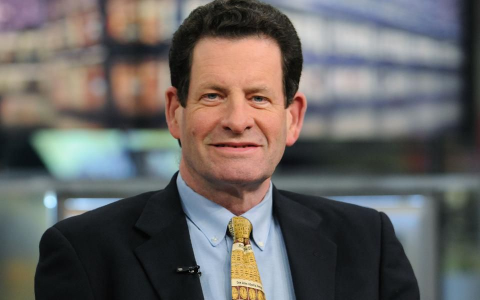
(Wire Reports) While on the surface it looked like a calm week for the stock market, there was a lot of turbulence down below. Rising interest rates caused investors to rotate out of once high-flying momentum and growth equities in favor of beaten-down value stocks.
You've got to be quick on your feet, says billionaire investor Ken Fisher, founder and executive chairman of Fisher Investments.
“It’s kind of like being a boxer,” Fisher recently told Bloomberg. “If you’re a boxer, and you plan to never get hit, you’re in the wrong game. You never want to have portfolios extreme enough that when a little wiggle happens, people pull their hair out.”
“Everything that I ever do I’m trying to do so that I’ve got a counter-bet,” he says. “You’re supposed to build a portfolio that way in the first place.’’
Separately, Fisher says the Federal Reserve should be purging "stupid" bonds from its balance sheet.
“Big corporations, top quality borrowers can borrow [money] in any part of the world they want — it’s the marginal borrower you want to help,” he told Yahoo Finance.
Fisher said people tend to think that cutting interest rates leads to more borrowing. More lending should boost the economy.
“But you have to have the provider ready to provide it,” Fisher said, referring to the banks. “When you make the yield curve steeper, banks become more eager to lend and as they become more eager to lend they lend to the more marginal borrower — the lower quality corporate borrower.”
The yield curve remains very flat and even spent weeks in August in inverted territory, where short-term rates were higher than long-term rates. An inverted yield curve has preceded past recessions.
“What the Fed really ought to be doing is purging itself, disgorging itself of all the stupid bonds they bought in the first place during quantitative easing, which was stupid and misguided,” he said.
The Fed’s balance sheet grew from roughly $1 trillion before the 2008 financial crisis to a staggering $4.5 trillion peak in 2017. That year, the Fed took gradual steps to start to reduce its balance sheet. It began a process known as quantitative tightening. Here, the Fed would allow a small portion of its bond holdings to mature instead of reinvesting those proceeds in new bonds. This process gradually reduced the size of the balance sheet.
But the Fed ended that process in late July 2019, amid worries over slowing economic growth.
“Right now [the Fed should be] disgorging the bonds, pushing the price of the long bond up a little bit, steepening the yield curve because banks are in the business of taking in short-term deposits to make long-term loans, making them more eager to lend. Who wants to lend money at these rates.”
On Wednesday, President Trump, in a tweet, called for the Fed to cut interest rates to “ZERO, or less.”



